What is a running meter of a kitchen and how to calculate it?

Buying or making custom-made furniture is a rather complicated procedure. Sometimes the buyer is confronted with cryptic definitions and immediately finds himself in a quandary. Clients are often confused when purchasing kitchen furniture, which is sold in most cases in running meters. In this article we will look at what running meters are, what they are for.
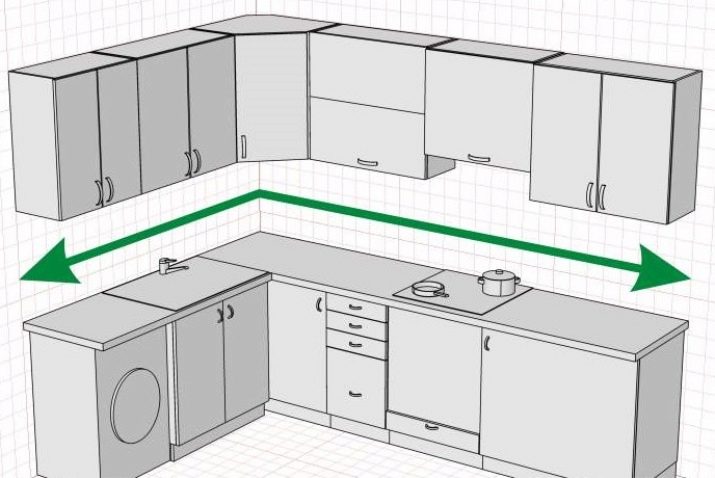
What it is?
Linear meter is the physical meaning of a part of any product with a length of 100 centimeters, other dimensions (width, thickness) are not taken into account. A traditional meter is equal in length to a linear meter. Usually, long-length products are counted in running meters, where it is inconvenient to count in square meters, for example, boards, wire and other goods.
It is much easier to calculate the price in linear meters than in square meters. This means that you do not have to perform complex mathematical operations. For example, you need to buy corrugated board for a fence with a height of 2 meters and a given length.
It is difficult to calculate the cost of such a segment per square meter.
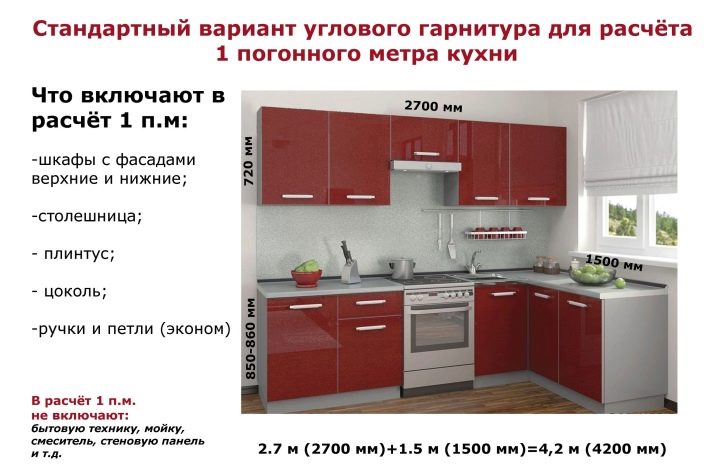
First, you need to calculate the area, then divide the total amount for the product by the received footage, and in the end we get the figure we need.
It is much easier to make calculations by taking the price per running meter as the basis. To do this, we just multiply the cost of one running meter of the fence by its length, and the result is the price for the product. There is a very large list of products, the price of which is calculated in linear meters. This list includes:
- boards;
- timber;
- wire;
- electrical cable;
- the cloth;
- linoleum;
- carpet products;
- polyethylene in rolls;
- various types of pipes;
- corrugated board;
- fences.
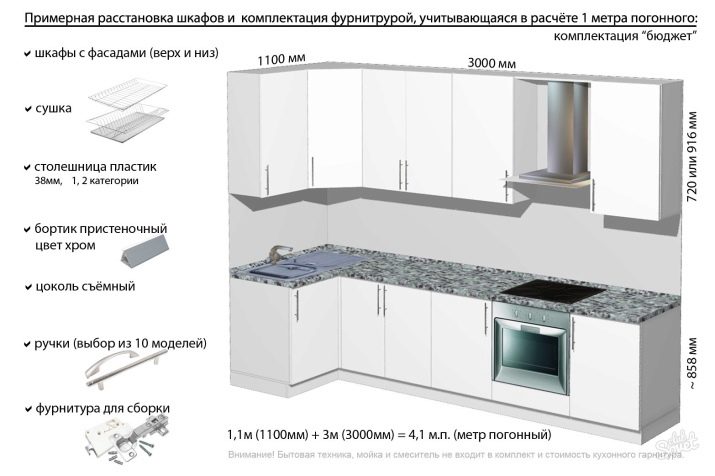
When calculating a running meter of a kitchen, it should be borne in mind that this is a rather conventional concept, adopted for clarity and simplification of the final calculations.
Why do you need to know?
After we have found out what a running meter is, a natural question arises: what is it for? It makes no sense to draw parallels between the prices of different manufacturers, since this is just the basis to which additional options and services are added. In the end, it turns out that the price for the final project will be higher than for the baseline.
A more correct solution would be to take the project you have selected and carry out calculations with a similar service package and in the same configuration from other contractors. This will help you compare prices in different design solutions for kitchen furniture.

After looking through the catalogs, if the price of furniture for the kitchen in linear meters is indicated there, you can already understand which option will have a higher cost, and which one will not be very expensive.
In a situation where you decide to buy a kitchen set, consisting of standard modules, then the set fee for 1 running meter will help you to pre-calculate the cost of the upcoming purchase and plan your cash spending, but with a greater tolerance. Therefore, it would be more correct to talk about the lowest price of a running meter. And further, immediately you need to lay in the estimate 25-30% of the amount for unforeseen expenses.
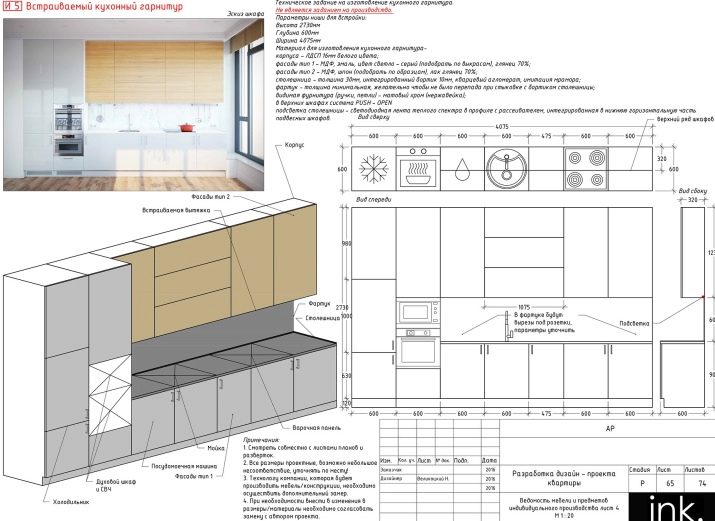
What is included and what is not?
Usually in a standard layout when calculating prices for one running meter of kitchen furniture (except that the dimensions of the room are measured and taken into account), the following are included:
- floor cabinets of the simplest design, with single or double doors, without pull-out trays;
- upper kitchen modules, without shelves and with a single door;
- countertop;
- the most affordable facades;
- inexpensive fittings (handles, awnings and furniture hinges).


Never turn on:
- sink, faucet - mixer and their installation;
- various household appliances (refrigerator, extractor hood, hob, oven, etc.);
- wall decorative panel;
- lifting mechanisms with door closers;
- glass facades;
- door handles made of metal;
- pull-out kitchen trays;
- any other accessories and decorations that will make your kitchen more comfortable and attractive.
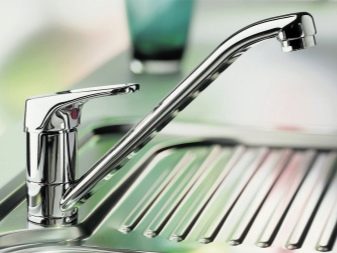

How to calculate?
It is not difficult to calculate the price for one running meter of the kitchen. The basis is most often taken the simplest kitchen set of standard sizes, which includes a set of the modules themselves, the cheapest materials and components. The standard is a kitchen set with a length of 3 meters, medium size without additional finishing, made of chipboard. It includes upper cabinets with minimal internal filling, a lower cabinet with opening doors and the thinnest table top.
After you have chosen the components and fittings for the kitchen, you need to decide on the cost of each component. After that, all prices are added up, and we get the total cost of the kitchen furniture.
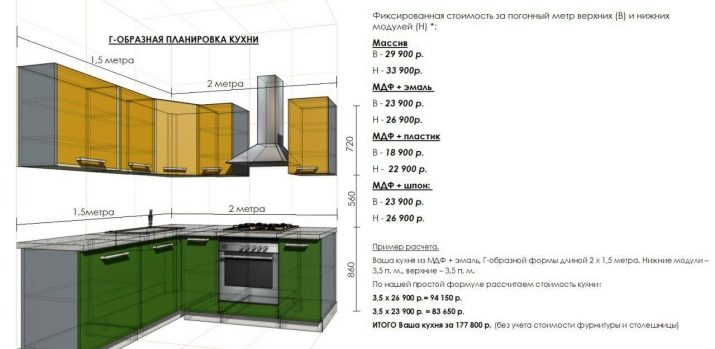
To calculate the cost of one running meter of a kitchen, you will need:
- measure the length of the kitchen, in order to avoid inaccuracies in the calculations, it is better to measure the measurement on the baseboard;
- find out the price of kitchen sets in furniture stores;
- make calculations.
In order to calculate the price per running meter, we take a calculator and divide the total amount by the length. For example: the total amount is $ 1,500. e. The length of the kitchen is 3 meters. We divide 1500 by 3 and calculate the price for 1 running meter. In the furniture showroom you will be offered a choice of components of different prices.
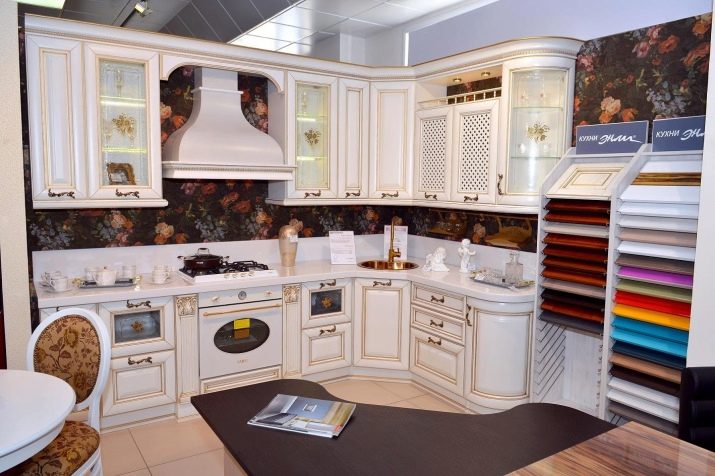
You will have to pay a little more for the choice of high-quality kitchen elements, but the kitchen set will become more solid and functional.
Kitchens that are the same size but made up of different modules will differ in price.Kitchen sets of individual sizes have a higher cost than standard ones, this must be borne in mind during the initial calculation. From the above, it is clear that any changes and additions made to the design of the kitchen will instantly raise the price. Several factors affect the cost of a kitchen set.
- The number of modules that make up the kitchen. The more of them, the more expensive the furniture.
- Materials from which kitchen furniture will be made (chipboard, MDF or natural wood).
- Registration. Custom-made decorative elements (stained-glass windows, glass facades) will decorate your kitchen, but will increase the cost per running meter.
- Filling. This includes special devices and storage devices - lifts, door closers, carousels, etc. These items make it easier to use the kitchen, but the price rises many times, sometimes 2-2.5 times.
- Fittings - high-quality components can significantly raise the price, but it makes no sense to cut costs on this, subsequent elimination of defects will cost more.
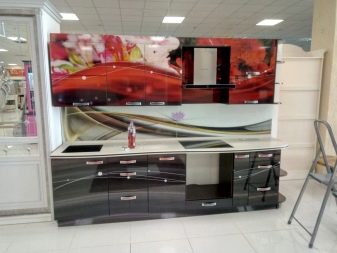
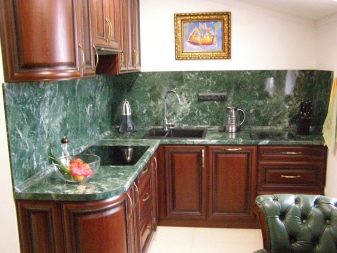
In order not to feel discomfort from the final cost of kitchen furniture, it is imperative to find out from the manager of a furniture salon all the features, as well as what this manufacturer includes in the average running meter.
You also need to find out the parameters of the lockers (depth, height and width). Do not forget that each performer has his own standard set of kitchen modules, components and materials for calculating the cost of a running meter. You can try to reduce the number of non-standard elements of the kitchen set, and then the price-quality ratio will approach the ideal.
What is a running meter of a kitchen, see below.








